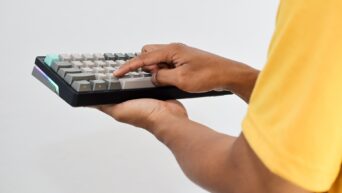
Credit: BIG/ICON
Dump in some moon rocks, get a house.
Once mankind can easily go to and come from the moon without incurring heavy expenses or wasting a lot of resources, the next step is going to be setting up a semi-permanent residence; in other words, an honest to goodness moon base. Just like my G.I. Joe playsets. The question, though, is what this theoretical moon base would be constructed out of. The only apparent options are steel or rubber. A steel building would take a lot of time and money to construct, and would likely produce a lot of waste, while an inflatable rubber building would probably be too fragile. Instead of shipping up a lot of foreign elements, why not just use what the moon already gives us?
NASA has formally teamed up with several firms to design the next generation (or first, I suppose) of moon domiciles. The collaborators include 3D-printing firm ICON, architecture firm BIG, and NASA’s own Space Exploration Architecture, or “SEArch+.” Collectively, this group’s efforts will be known as Project Olympus.
“With ICON we are pioneering new frontiers – both materially, technologically and environmentally,” said BIG founder Bjarke Ingels.
“To explain the power of architecture, ‘formgiving’ is the Danish word for design, which literally means to give form to that which has not yet been given form,” Ingels added.
“This becomes fundamentally clear when we venture beyond Earth and begin to imagine how we are going to build and live on entirely new worlds.”

Credit: BIG/ICON
The current working idea of Project Olympus is to create a semi-automated 3D-printing system that, when fed the moon’s indigenous materials (i.e. dirt), can quickly fabricate a simple construct. Utilizing the moon’s materials instead of shooting up Earth-borne materials would save a boatload on Earth-to-moon delivery, not to mention eliminate the need to wait for additional materials to continue construction. As long as the moon’s got dirt, they can keep building.
A team of researchers over at the Marshall Space Flight Center in Huntsville, Alabama will soon begin running tests on simulated moon soil samples to see how well they work as 3D-printing materials. If all goes well, this new system could be a vital piece in NASA’s Artemis program that seeks to establish a human colony on the moon within the next decade.
































